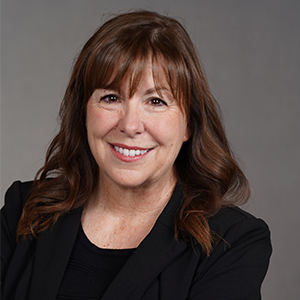Say you’ve got a crucial problem at work and you’re gathering the troops for a brainstorming session.
You know what this looks like, right?
Coffee, a whiteboard, and a dozen people in a conference room throwing out ideas until you come to hearty agreement on the best solution out of a good 10 options.
A successful outcome? Maybe not.
According to one expert, Alan Grant, a professor at the Wharton school of business who researches creativity and innovation, the above scenario is almost certainly going to lead to the same old tired answers.
In a wide-ranging and entertaining session at the Ellie Mae conference, Grant detailed what really fosters innovative thinking within companies.
First, ditch the large brainstorming sessions — research shows some of the best outcomes come from an intimate meeting of just two people. In a small setting people are more trusting and more willing to share ideas, plus quieter employees won’t be overshadowed by louder, more social counterparts. In a big group, once it’s clear that three or four people like an idea, group-think sets in and that one idea seems like it’s the best thing since sliced bread. Even if it isn’t.
Second, multiply the number of ideas you generate. Ten to 12 feels like so many when all those people are sitting around a table, but it’s only a starting point, Grant says. A really productive brainstorming session would produce about 200 ideas, which can be culled to the best 10 or so.
And those ideas should be written out, anonymously if possible, before the culling begins so that ideas stand on their own and aren’t as easily subjected to our biases. You know, like the bias that expects honey dripping from the tongue of that really cool designer but might dismiss the astute observation of an operations guy. Plus, anonymity saves people from having to pretend to like the boss’s idea.
Grant’s advice was funny and relevant, which makes me want to read his book, Originals: How Nonconformists Move the World, as a further primer on the subject. His observations about the kinds of people you need to hire for an innovative workspace were especially enlightening, and somewhat counterintuitive.
In the meantime, here’s a recap of his Q&A session with Jonathan Corr, president and CEO of Ellie Mae.
Q. How do you help people let go of the past?
A. It’s hard. One place I would start is banning the phrase “this is not the way we’ve done it before.” I don’t care what worked in the past or what’s working today — I care about what’s going to work tomorrow. Remember, it’s not enough to just sell the benefits of changes you want to make. People are more excited about what worked in the past so you have to emphasize that bad things will happen if you don’t change.
Q. Ellie Mae has such a culture of giving back, and I know many of our customers in the room have a similar environment. But do you have any suggestions for teams that maybe don’t have that on how to change their culture?
A. You have to be systematic about not hiring “takers.” I hear people say, but this person is so talented, etc. It’s a dangerous mindset. If you look at the cultural damage that really selfish people do — research shows that the average selfish client costs companies $4 million a year. Not only will they do what’s best for them the moment their interest diverges from yours, they will cause the most opportunity for other people to want to leave. Reward systems are also huge here. Do you only reward individual performance? To be named a Corning Fellow where you have a job for life [at Corning Incorporated] they look at whether you are the lead author of a patent worth $1 million. But they also have a second set of metrics, which is whether you are a supporting author on other people’s patents. Do you both drive success and elevate the success of others? So, what is the equivalent of that in your company? As you think about incentive systems, think about how you drive behavior.
Q. Is it possible to become an original thinker if you’re not already one.? What practices help someone become more original?
A. It is possible. Everyone has a different starting point — there are wildly creative people, but you can start more relative to where you were on baseline. One thing that characterizes great inventors, musicians and artists is that they have many more bad ideas than their peers. The more original you are, the more stupid ideas you’re going to have. The reason is they just have many more ideas, which helps them stumble on original insights. They come up with many, many possibilities first. A typical brainstorming session should have 200 ideas on the table.
A. There are lots of original thinkers out there, but if you had to choose just one, who would is one of the most original?
Q. It’s hard to choose just one, but if I had to, it’s probably Elon Musk — I mean it’s hard not to pick the guy who inspired Iron Man! He didn’t unfold the full extent of his plans of going to Mars all at once. First he talked about launching commercial rockets into space. Milestones build trust. When I asked him about the odds of getting to Mars, he said the odds used to be close to zero, but now they are about 12%. To take such a long view, and see the future for humanity is to colonize other planners and feel that a 12% shot is worth trying, incredible.







